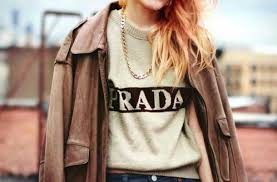All of these factors have led to the growing popularity…. not because they are lowkey… but more often than not — due to price. Depending on the rarity and demand they own, an authentic brand footwear such as Nike Air Jordans or Yeezy sneakers could go anywhere from $200 to well over $1,000. Counterfeit shoes, on the other hand — which seek to provide that appearance and not at 100X ($300 –$700 for a pump), but $30 or so dollars all told up to about maybe even more per (maintenance has become smartphone-like as well) pair of footwear. Replicas are big business because of the wide price disparity and most importantly, people who really subscribe to buying this particular expensive vanity item actually rarely do sourced from qualified high-grade businesses.
Fake shoe sales are only increasing due to the better quality and craftsmanship. Improved manufacturing methods in countries such as China have enabled counterfeiters to manufacture replicas using materials, stitching and even packaging that look quite similar to the genuine articles. Experts in the field say that some forgeries are as good, on occasion better than the originals and even experienced collectors have trouble telling them apart from genuine pieces. As a result of this better quality, buyers still unsure whether they should spend their hard-earned money on replicas will probably lean towards buying them.
In addition to this, there is the influence of social media and influencer culture that has contributed to an increase in fake shoes. Not that long ago sneaker culture was still hidden in the underbelly of streetwear, but now brands are so much louder on platforms like Instagram and TikTok demanding you keep up with trends. Popular sneaker models are considered a source of social clout for many young people, and fake shoes serve that same function at a fraction of the price. A 2022 Study Showed That Young Adults (Generation Z)Would Be Willing To Purchase Fakes If They So Exactly Resembled The Original. Like we have mentioned earlier, with the progress of sneaker culture; that sentiment is also changing more favorable towards replicas.

Conversely, the demand for fakes has grown due to the rarity of limited-edition sneakers. Top launches from the power brands such as Nike and Adidas can sell out in minutes — leading to a resale market where sneakers priced at several times their retail cost. Likewise, an exclusive Travis Scott Air Jordan pair can resell for more $2k bio per, which is inaccessible to most of us. That leads to a lot of sneaker fans opting for counterfeit shoes that look just like the real thing but are not being sold at sky-high resale costs.
There are also cultural shifts that have come along with wearing fakes becoming less taboo. In certain areas wearing counterfeits is not frowned upon as much, it appears to be more of an economic decision for people. As prominent sneakerhead Ari Petrou is quoted, the difference between replicas and real deal sneakers seems increasingly blurred in today's fashion setting with many people baring a taste for pure style over authenticity.
Nonetheless, the emergence of fake shoes also has a dark side. This fake market leads to economic losses for real brands and is responsible for about $1.8 trillion a year in global counterfeit channels, according to the International Chamber of Commerce (2023). Nonetheless, the trade of counterfeits mushrooms away corollary to high consumer-side demand for budget-friendly solutions.
While buying fakes is more cost effective, of a higher quality and serves as social media culture influencers' entry ticket to the sneaker community online. While these variables are active, one might wonder if fake shoes will ever lose its popularity and follow a more general trend in consumer behavior & fashion industry.